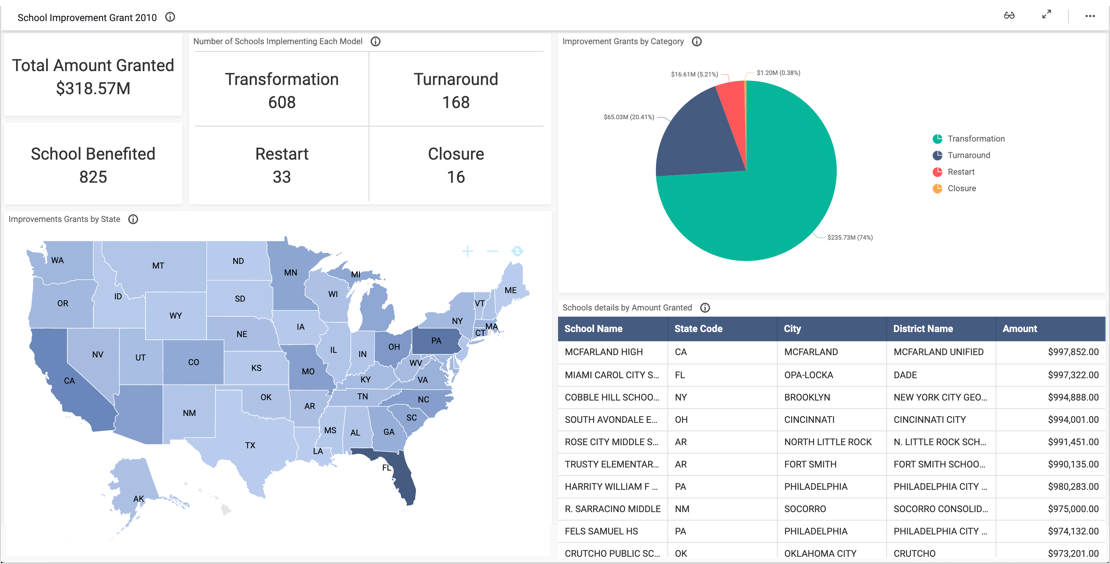- How many accidents occurred in each state?
- How many accidents occurred in each month?
- What caused these crashes?
- What kinds of vehicles were involved in these accidents?
Accident Statistics and Contributing Factors
This government dashboard’s information is crucial because it allows users to track the number of car accidents that occurred. Further, it helps the viewer assess the accidents’ causes. With this data, government agencies could work to implement policies and solutions that might prevent such collisions from occurring in the future.
First, in order to view the number of crashes that occurred in each state, we can hover over each state on the “Accident Count by Region” widget. This widget is a choropleth map. These maps use differences in shading to indicate differences in the values being compared. In this case, states that are lighter shades of blue had fewer accidents, and states that are darker shades of blue had more accidents. Smart Dashboard’s choropleth map widgets can be set up with just a few clicks of your mouse, and they are invaluable when viewers need an easy visual reference for comparing different measurements within a geographic region.
Next, the “Contributing Factors” bar chart separates the accidents’ causes into three main categories: human, environmental, and vehicular. However, we can obtain additional details from this chart because it utilizes the multilevel drill-down feature. This means that you can click the three bars to view more detailed breakdowns of their respective categories. For example, if I click the “Human” bar, I can see how many accidents were due to alcohol, drivers falling asleep at the wheel, distracted drivers, unsafe speed, and so on.
Use Data to Reduce Motor Vehicle Crashes
Finally, with the “Accident Count by Vehicle Type” and “Accident count by Vehicle Manufactured Year” widgets, we can see the ages and types of cars that were most and least likely to get into accidents. While this data is useful on its own, we can also cross-reference it with other data sets (including the Vehicle category of the “Contributing Factors” widget) to obtain additional information and ideas.
For example, we might be able to explore whether connections exist among car types, their ages, and their likelihoods of getting into an accident. If four-door sedans were most likely to get into an accident, and cars manufactured in the year 2000 got into the most accidents, were there safety defects or recalls in sedans in 2000 that may help explain these numbers?
While these connections may be speculative, they could help researchers determine whether additional studies are needed; this, in turn, could help regulators use past data to improve car safety in the future.
Smart Dashboard’s dashboards are an invaluable tool not only because of the information they put at your fingertips—such as motor vehicle accident statistics and contributing factors—but also because of the potential connections they allow you to make between data sets. These connections are easier to recognize when you can access all of the industry’s key metrics in one convenient location.



